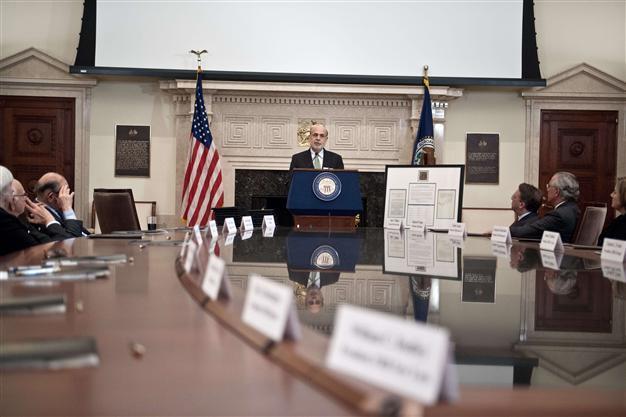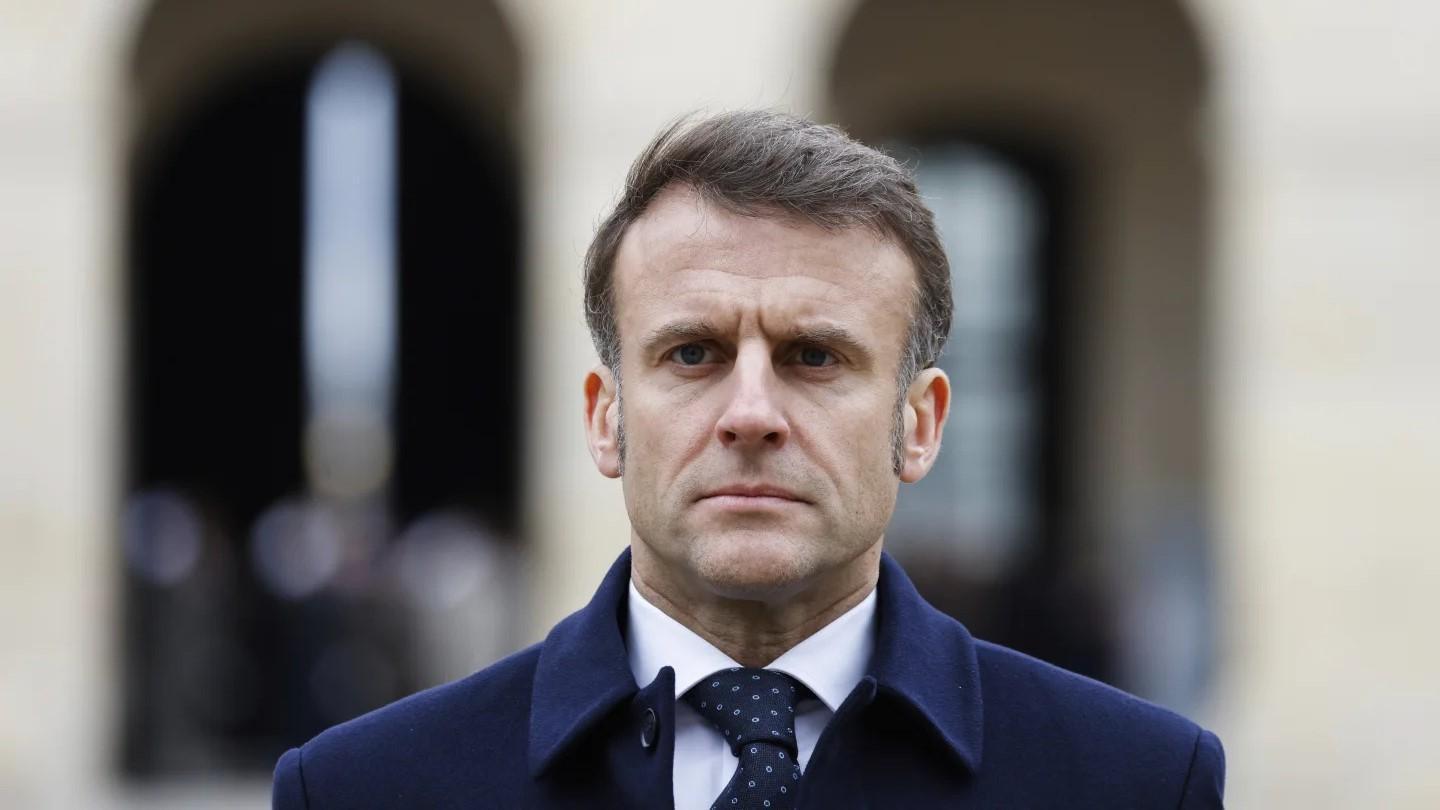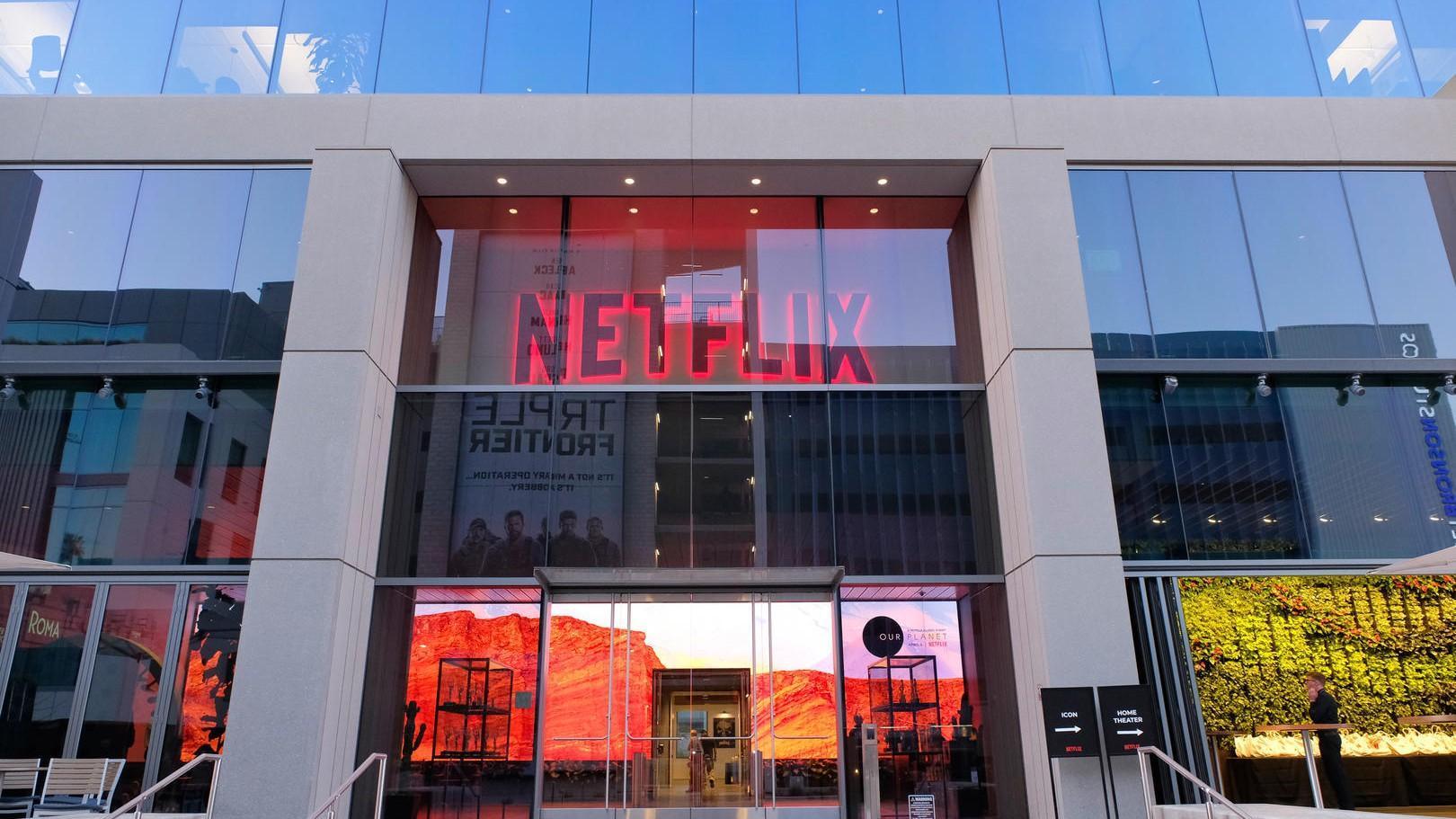Top Fed officials zero in on next policy steps
PHILADELPHIA - Reuters

US Federal Reserve chairman Ben Bernanke addresses a ceremony marking the centennial of the founding of the Federal Reserve in Washington,DC on December 16, 2013. AFP Photo
The U.S. Federal Reserve, having just reduced its bond-buying program, now appears deep in debate over the best way to unwind its extraordinary stimulus in the months and years ahead.Wrapping up a big economics conference in snow-swept Philadelphia, a handful of top U.S. central bankers were sometimes at odds over the ideal pace at which to wind down the purchases and, eventually, start to shrink the Fed's balance sheet and raise interest rates.
The Fed has held benchmark rates near zero since late 2008 to spur growth and hiring in the wake of the Great Recession. It has also quadrupled the size of its balance sheet to around $4 trillion through three rounds of massive bond purchases aimed at holding down longer-term borrowing costs.
In what came as a surprise to some, the Fed decided last month to cut its current quantitative easing program, or QE3, by $10 billion to $75 billion per month. It cited a stronger job market and economic growth in its landmark decision, which amounts to the beginning of the end of the largest monetary policy experiment ever.
Boston Fed President Eric Rosengren dissented against that decision. On Saturday he urged patience as the Fed continues to trim the purchases, in part because he said it risks a permanent rise in the number of Americans who are out of work.
"The failure of monetary and fiscal policy to generate a more rapid recovery risks creating a long-term structural unemployment problem out of a severe cyclical downturn," the dovish Fed official said at the meeting of the American Economic Association.
U.S. unemployment has dropped from a post-recession high of 10 percent in 2009 to 7.0 percent in November, a five-year low. Still, the proportion of the unemployed who have been so for more than six months remains high, at almost 40 percent.
In what might be his last keynote speech as Fed chairman, Ben Bernanke told the conference on Friday that the economic recovery has a long way to go, and that the Fed is committed to stimulus as long as needed. Last month, he said the Fed plans to keep buying bonds through much of the year.
Beyond that, the central bank has tried to telegraph its future intentions by saying it will most likely k
eep rates near zero well beyond the time joblessness falls below 6.5 percent.
Those promises make hawkish Fed officials like Charles Plosser uncomfortable. On Saturday Plosser, the head of the Philadelphia Fed, warned the recession could have done permanent damage to potential U.S. output.
Taking an indirect swipe at an approach favored by Fed Vice Chair Janet Yellen, Plosser said he is skeptical of "optimal control" policy-making in which mathematical models are used to predict when things like unemployment and economic growth will return to more normal levels.
"Measures that arbitrarily, or by assumption, assign the bulk of fluctuation in GDP to purely temporary factors may provide poor policy guidance when shocks are more permanent in nature," he said.
Yellen, who is set to take the reins at the U.S. central bank next month, has in the past suggested higher inflation could be tolerated for a short while in order to speed up the overall economic recovery.
Life after bond-buying
While gross domestic product growth rose above 4 percent in the third quarter, it has generally stayed closer to 2 percent since the recession ended in 2009, causing some to think that longer-term potential GDP growth is no longer the 3-percent rate to which Americans are accustomed.
If that is the case, the Fed's ultra-easy policy stance, including promises to keep rates near zero for a while to come in order to drive down joblessness, may be misdirected.
"The shock that hit the economy appears to have had very persistent, if not permanent, effects," said Plosser, who regains a vote on policy this year under the Fed's rotating system. "From a statistical perspective, the economy appears to have taken a permanent hit to the output level."
For now, the Fed is looking for sustainable economic growth and labor market improvement before it stops buying bonds and starts looking to shrink its balance sheet.
William Dudley, the influential head of the New York Fed, said he hopes the balance-sheet trimming will start to happen in the next four years - the duration of Yellen's term if she wins U.S. Senate approval as expected on Monday.
"But there is a lot of uncertainty about how monetary policy exit will occur with the very large balance sheet," Dudley said. "We have a pretty strong presumption that the instruments we have in place will work very well ... But there is no question that there could be unintended consequences."
Clearly communicating policy intentions "becomes critically important" in this phase because "the real question is not what will happen today but what will happen in the future," he said.
Michael Woodford, a Columbia University professor whose writings on such communications have been hugely influential at the Fed and other central banks around the world, urged the Fed to further clarify exactly what economic conditions would cause it to consider raising rates.
"I'm a little disappointed that ... they haven't been willing to tell us much more. They backed off somewhat," he told the conference on Friday, noting that 6.5 percent unemployment - the level the Fed has tied to a possible policy tightening - is not that far off.
"One hopes that the new FOMC (the Fed's policy-making committee) will address this issue ... in coming months."
















